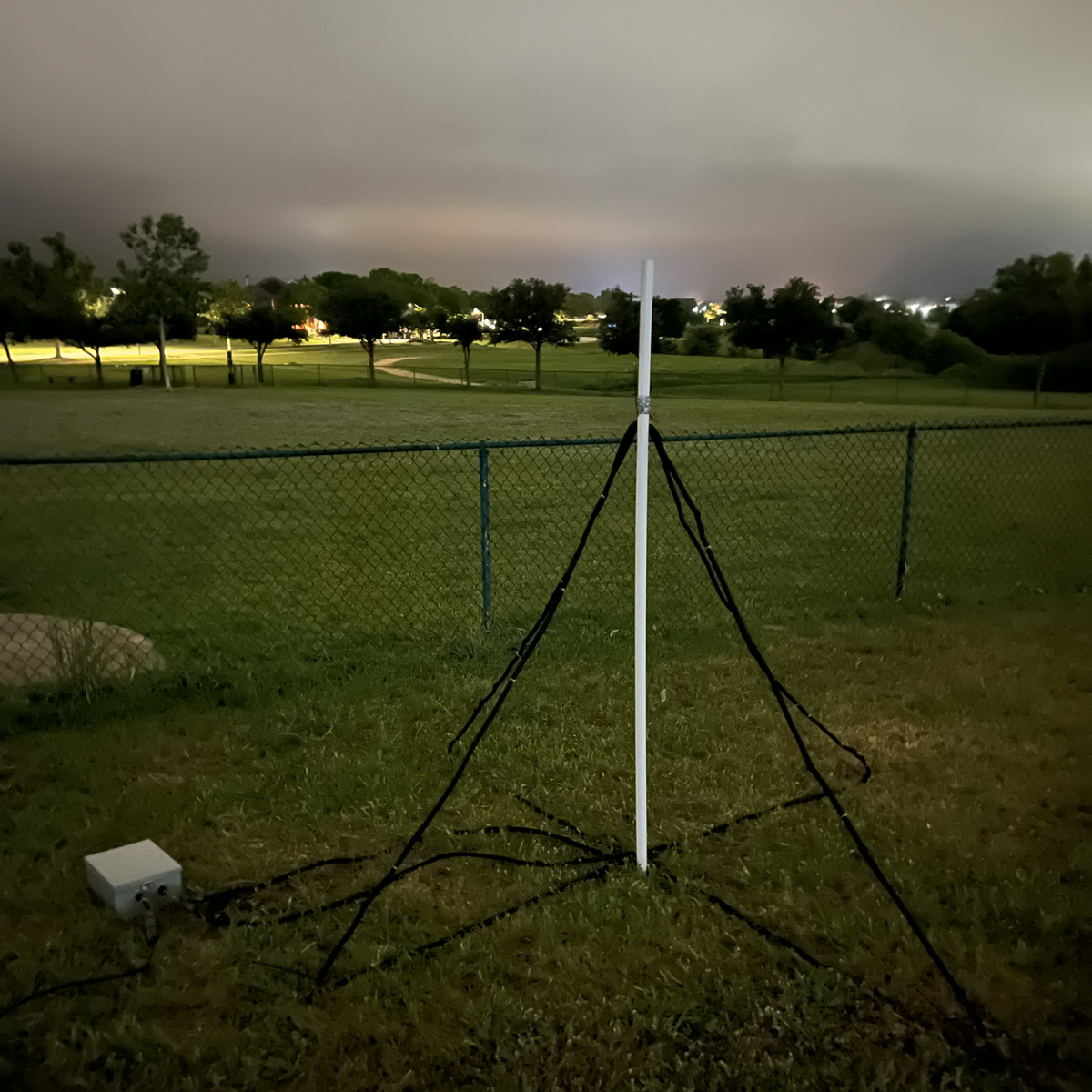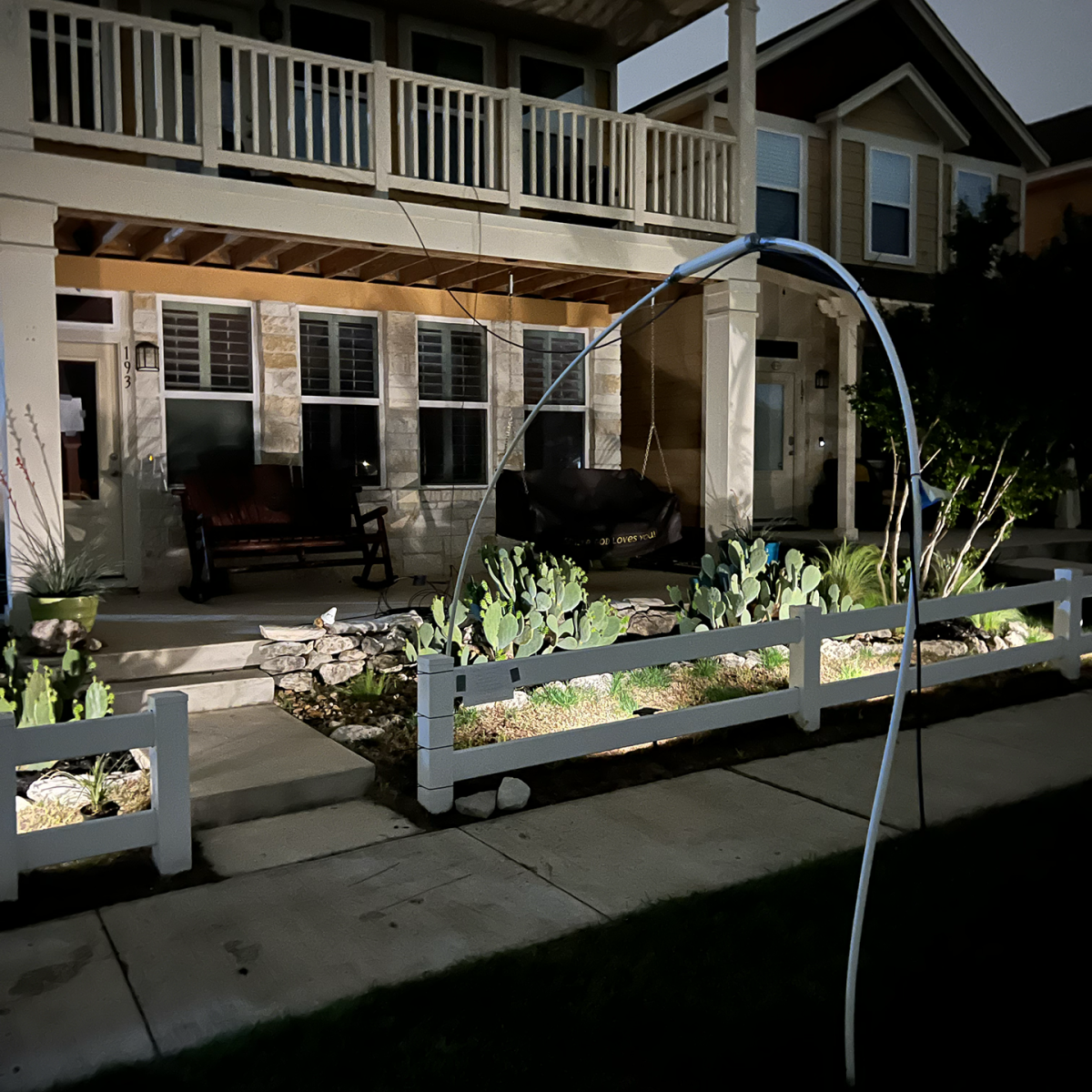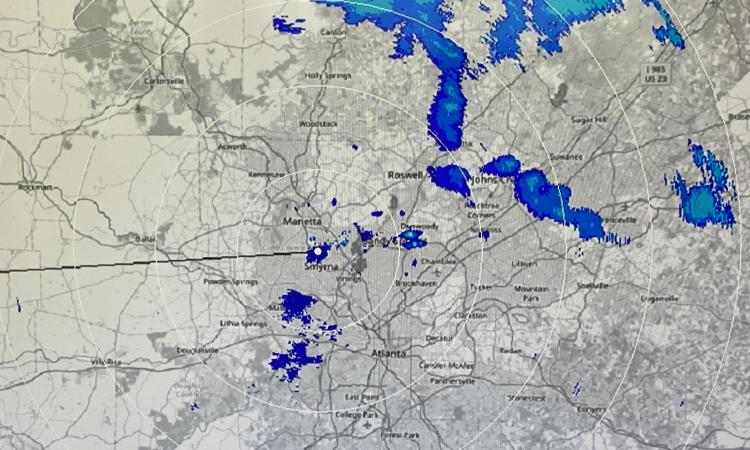
Kevin Whitmore, Matthew Strong, Roderick Gray, and Varun Rajput of the Low Frequency Lab in Texas preparing to capture date of the Earth's ionosphere during the April 2024 solar eclipse.
While hundreds of Georgia Tech students gathered on Tech Green on April 8 to witness the first eclipse in the United States in close to a decade, three Ph.D. students in the School of Electrical and Computer Engineering (ECE) began preparing for the eclipse days ahead. Roderick Gray, Matthew Strong, and Varun Rajput, along with ECE research engineer Kevin Whitmore, traveled early Saturday morning to Houston, Texas.
The team, part of the Low Frequency Lab directed by ECE Professor Morris Cohen, set out with a goal of capturing data that could revolutionize our understanding of the Earth's ionosphere, particularly the elusive D-region.
Upon arrival in Texas, they split off to three receiver sites in Kerrville, Lost Pines, and Waco. The solar eclipse offered a unique opportunity to study the ionosphere’s behavior under unusual solar conditions.
At each location, they install specialized receivers made to analyze low-frequency radio waves influenced by the eclipse that would collect and analyze the variations in the ionospheric particles when the sun's rays were blocked momentarily. They chose three locations that are at least 25 miles apart, but not more than 200 miles apart to ensure the receivers would not measure the data as one location.
The receivers consisted of two triangular loops of wire about five feet wide, suspended waist-high off the ground by a length of PVC pipe. They were connected to a shoebox-sized console that grabs the signal, records it a million times a second and sends it off to a computer.
Upon arrival in Texas, they split off to three receiver sites in Kerrville, Lost Pines, and Waco. The solar eclipse offered a unique opportunity to study the ionosphere’s behavior under unusual solar conditions.
Their mission was to install specialized receivers made to analyze low-frequency radio waves influenced by the eclipse that would collect and analyze the variations in the ionospheric particles when the sun's rays were blocked momentarily. They chose three locations with at least 40 kilometers (about 24.85 miles) apart, but not more than 300 kilometers apart. This was just enough proximity to ensure the receivers would not measure the data as one location.
The receivers consists of two triangular loops of wire about five feet wide, suspended waist-high off the ground by a length of PVC pipe. They are connected to a shoebox-sized console that grabs the signal, records it a million times a second and sends it off to a computer.

One of specialized receivers made to analyze low-frequency radio waves.

The eclipse allowed the team to collect and analyze ionospheric particles when the sun's rays were blocked momentarily.
The ionosphere is a layer of the Earth's upper atmosphere, ionized by solar radiation, which affects radio wave propagation and, consequently, communication and navigation systems. Its D-region, situated 60 miles above the Earth, presents a challenge for researchers due to its inaccessibility and the complexity of its interactions with solar radiation.
Understanding the D-region's nuances is not just an academic exercise; it has practical implications for improving global communication systems, enhancing the accuracy of GPS technologies, and even aiding in the prediction of space weather effects, which can disrupt communications and power grids on Earth.
The eclipse presented a transient but critical opportunity.
"As the moon's shadow passes over the Earth during the eclipse, the ionosphere's D-region experiences conditions akin to nighttime," explains Strong. "Our aim is to create a high-resolution map of the electron density during this transition and get a snapshot of an extraordinarily dynamic process."
This snapshot is not just about capturing a moment, it is about peeling back layers of atmospheric behavior which have eluded study because of limited traditional observation methods during regular day and night cycles.
“The eclipse gives us a perfect planned sunset, daytime to nighttime to daytime, very rapidly,” said Whitmore in an earlier article from the Atlanta Journal Constitution. “It gives us a peek at how those layers move up and down based on the influence of the sun.”
By mapping the ionosphere, the lab’s studies could help lay the groundwork for a backup system unaffected by sabotage or solar flares.
The Low Frequency Lab hopes to fill the knowledge gap in atmospheric and use the eclipse dataset to pave the way for advanced analysis, including the employment of machine learning techniques to enhance behavioral models of the ionosphere.
Related Content
ECE Ph.D. Candidate Returning to Alaska to Continue Transformative Atmospheric Research
Jeremiah Lightner atmospheric research will help his group create the first accurate top-to-bottom model of the ionosphere.
ECE to Utilize New Weather Radar Technology
The radar will also be used for class projects or examples in upper-level courses such as ECE4390: Radars and remote sensing.
(text and background only visible when logged in)

